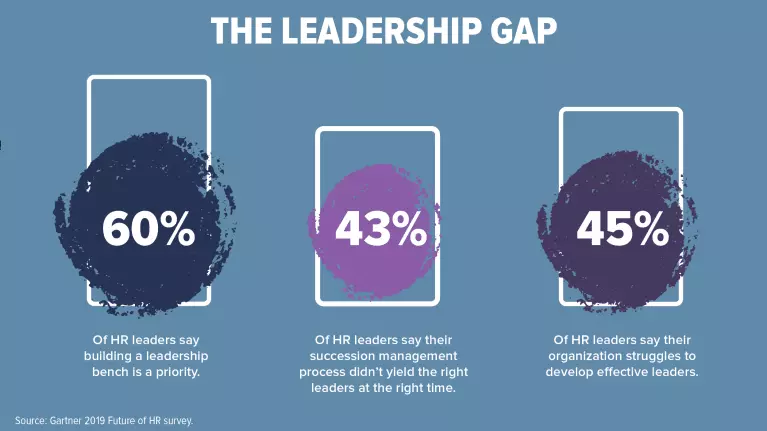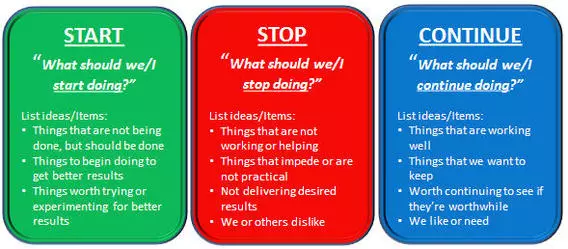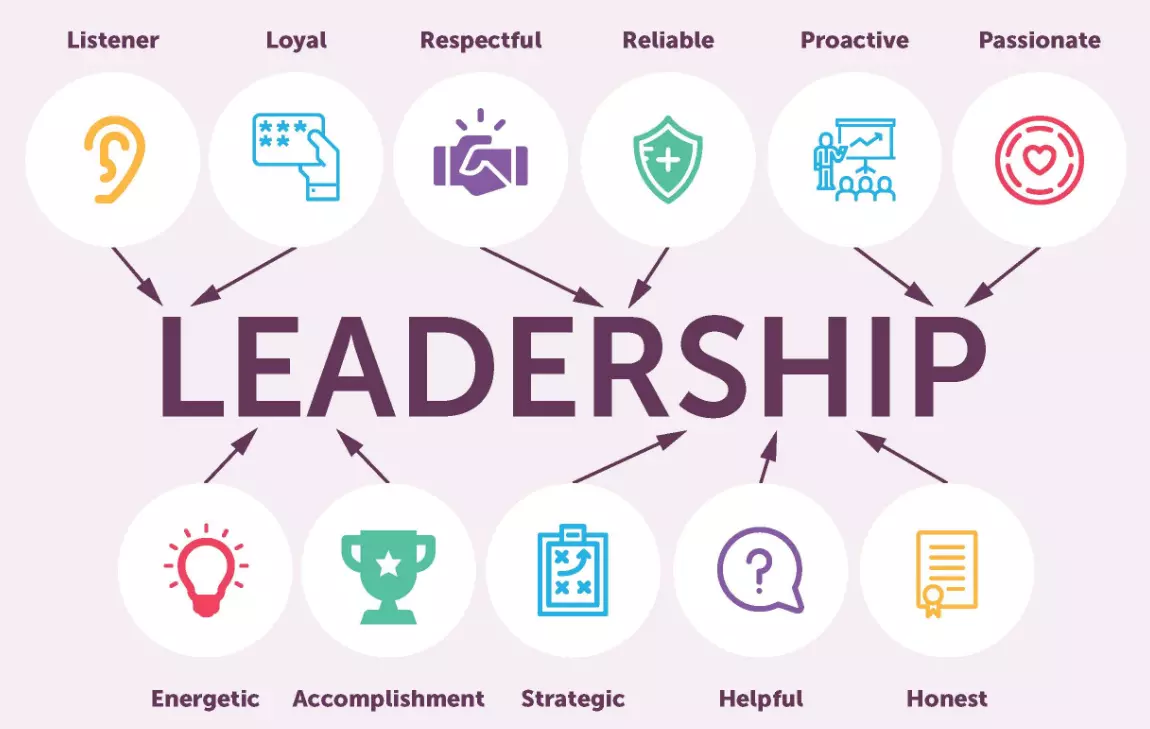Leadership training is a must for every company because it is one of sure-fire ways of building effective leadership, and delivering exceptional business results.
Each organization has a unique culture and, therefore, a unique concept of leadership. However, as Vroom and Jago (2007) observe:
“Virtually all definitions of leadership share the view that leadership involves the process of influence”
Without a doubt, great leaders are capable of influencing others in many ways.
They are a source of motivation and inspiration; a powerful force that drives positive culture changes and keeps teams moving forward.
But, the question is, can people learn to be leaders?
And do existing leaders need ongoing training?
Let’s define leadership training.
What is Leadership Training?

Leadership training and development helps identify high-potential individuals that are likely to become leaders and extends the capabilities and knowledge of individuals who already perform leadership roles.
Leaders may need training in both soft and hard skills, depending on your organization’s current challenges.
For example, new and coming leaders may need to develop skills such as listening, conflict resolution and time management, so that they can step in their role.
Senior leaders, on the other hand, may need training to keep up with new trends and technologies such as Artificial Intelligence and Virtual Reality, so that they can better define the company’s overall vision.
Why Invest in Leadership Development and Training?
The first compelling reason is growth. If your leaders are not committed to constant personal and professional development, your organization will eventually stagnate.
This was articulated in the Law of the Lid, the first lesson of John C Maxwell’s The 21 Irrefutable Laws of Leadership, which states that leadership ability is a lid to the organization’s effectiveness.
The second compelling reason is change management. According to a report by Harvard Business School, three powerful forces are redefining the nature of work and create a need for leadership training:
- Rapid globalization: By 2025, the majority of the Forbes Global 2000 public companies will be headquartered in emerging markets. This will require leaders to develop new skills to overcome physical and cultural boundaries and lead teams across borders.
- Rise of remote workers: Within a decade, half of the US workforce will comprise of contractors and freelancers. Leaders will need to learn not just how to manage dispersed teams, but also how to engage and unite them.
- Generation gaps: Gen Y (Millennials) and Gen Z are rising to leadership positions and bringing in new ideas related to work and learning. This puts pressure on traditional leadership approaches and requires training to overcome differences.
Finally, the third compelling reason to invest in training leaders is the leadership gap—the fact that organizations are struggling to fill leadership positions.

(Source)
These reasons make leadership development not just important, but also something to include in your ongoing employee training.
What Leadership Skills Should Your Organization Develop?
Whether an office manager or a senior executive, great leaders need a foundation of soft skills to help them positively influence the behavior of co-workers and team members. Below are the essential leadership skills.
- Listening: This is the ability to redirect your focus from yourself to others and actively work to understand their needs. Leaders have to be great listeners because this helps them build trust with their team.
- Loyalty: Good leaders put the success of their team first. As Arnold H Glasow said, “A good leader takes little more than his share of the blame and little less than his share of the credit.”
- Respect: An essential trait of effective leadership is communicating and acting with respect and integrity. This helps establish a leadership style based on working together instead of giving orders.
- Reliability: If team members perceive their manager as a reliable partner who is always on their side, they will be more motivated.
- Initiative: Leaders have to be proactive—to set direction for the team, to work towards meeting the company’s goals, to anticipate problems and suggest alternative solutions.
- Passion: A great leader is dedicated to the success of the team, understands what motivates them and knows how to encourage them to be at their best.
- Enthusiasm: Leaders need to be positive, energetic and encourage others to adopt the same attitude. This helps get buy in for their ideas and motivate workers to come up with creative solutions when working through a difficult problem.
- Accomplishment: Being a great leader means being an example to the team, always coming up with new solutions and testing every possible option before saying that something can’t be achieved.
- Strategic thinking: Leaders should be able to step back from the daily grind, connect current tasks with long-term goals and focus on the results, not the process.
- Support: A great leader should be readily available to answer any questions and resolve any issues employees might face.
- Honesty: To be successful, leaders have to learn to be authentic and adopt a “what you see is what you get” attitude—consistency between words and actions.
(Source)
Some people naturally possess many of these qualities and some don’t but, in either case, management training is needed to develop a successful leader.
How to Create an Effective Leadership Training Plan
1. Develop a Culture of Learning
Your leadership development initiative won’t get employee and executive buy-in if your organization doesn’t value learning and development. That’s why the success of any corporate training program depends on your culture of learning (or lack thereof).
One of the ways to create a corporate learning culture is to enable knowledge sharing. A knowledge base software can be invaluable here, serving as a centralized hub for essential training materials, leadership resources, and shared insights. Recognize and reward the employees who are working to develop new skills and encourage their peers to follow suit.
2. Define Learning Objectives
First, consider the leadership gaps that your organization may face—either in recruitment or succession. Do you have difficulty hiring or promoting new leaders? Are any senior leaders expected to retire soon?
Second, take into account your organization’s strategic objectives. For example, if you’re planning to expand in a new market, you may want to focus on developing the right leaders to meet this particular goal.
Third, reflect on the leadership traits and skills that your organization values. Understanding what your best leaders have in common will help you decide what your future leaders should be learning.
Finally, pinpoint your audience. Is your training for managers? For senior executives? Or for rising leaders? This will help you determine what methods and activities to employ.
3. Create the Right Mix of Leadership Training Methods
Certainly, each leadership program requires a tailor-made plan that fits with the organization’s unique corporate learning needs.
What is common to the best programs, though, is that they use diverse training methods. Here are the ones used most often:
- One-on-one learning. For example, pairing senior executives with leaders who have just taken on a new role can be very effective, especially if your goal is knowledge transfer or succession. This was confirmed by Dr Sydney Finkelstein, Tuck School of Business at Dartmouth College, who studied world-class leaders for 10 years to determine what sets them apart. In a recent article for Harvard Business Review, he says, “One big surprise was the extent to which these star managers emphasize ongoing, intensive one-on-one tutoring, of their direct reports, either in person or virtually, in the course of daily work.”
-
Group learning. This approach can come in various flavors, involving both internal and external activities. Group-based learning can be used to
- identify employees with leadership potential
- train future leaders to understand group dynamics
- tackle real-world challenges
- enable leadership team development—those already in management can form a peer group to help each other develop new skills, improve interpersonal communication and break functional silos
- Self-directed learning. It’s true that leaders can’t grow in isolation but self-directed learning has its place in your training. This form of corporate learning and development can, for example, be used to teach soft skills such as communication techniques and strategic thinking.
The advantage of self-directed learning is that participants can progress at their own pace, using the provided learning materials, guidelines, exercises and self-assessment tools.
4. Include experiential training
In an article from Paul O'Keefe, Leadership Development expert at Edge Training Systems, emphasizes the importance of experiential training for leaders stating "leaders cannot be created or fabricated. They can, however, be developed and nurtured – which is what your leadership program should do. As you build your program, consider situations you can pose to your participants that will push them to grow and learn.”
Enabling leaders-in-training to practice what they have learned creates those “a-ha” moments when they understand how specific skills or knowledge can be used in a real-world situation.
If they are currently employees, this could mean placing them in charge of a big project; if they are middle-level managers, it could mean shadowing an executive.
Whatever the case, it’s important to enhance your real-world practical exercises with continuous feedback, coaching and mentoring.
5. Define success
As with any other type of corporate learning and development, your training needs a definition of “success”. So, before launching your program, determine how you will measure its impact. Some key indicators you may want to track are:
- The number of participants who successfully completed the program
- The number of participants who were promoted
- What peers say about each participant’s leadership development (you can use an employee evaluation form such as the 360 Skills Assessment for this)
- Whether the employee’s responsibilities increased
- Whether the leadership skills you taught helped employees become more effective at their current jobs
Understanding these areas will help you assess the effectiveness of your leadership skills training and create a better roadmap for future initiatives.
Now that you have the main components of a leadership development program, let’s explore specific training ideas and activities.
Leadership Training Activities for Employees
Leadership training activities should focus on preparing employees to move from managing self to managing others. An emerging leader development program can include:
- Self-assessment exercises to build self-awareness and identify areas of improvement
- On-the-job training such as taking charge of a functional project to increase responsibility and accountability.
- Mentoring and coaching from experienced leaders to help the employee become familiar with the organizational management and leadership style.
- Group activities to allow emerging leaders to grow together, connect across organizational functions and develop a management mindset
- Remote training programs will most likely become an emerging trend after the COVID-19 crisis. By creating an online corporate training program you enable employees that are on a leadership track to learn at their own convenience.
The way you structure mentoring, coaching and on-the-job training depends heavily on your learning objectives, so it’s something that will be unique to your organization.
As to self-assessment exercises and group activities, we’ve listed the most effective ones below.
Self-Assessment Exercises
Feedback: Start, Stop, Continue

(Source)
Suggested by (Cserti, 2018), this activity focuses on providing and accepting constructive feedback—two of the most important leadership skills. Start, Stop, Continue is suitable for teams that have worked together for a while. The goal is to receive feedback from co-workers by asking what to start, stop and continue doing.
Explore your values
This group exercise enables individuals as well as the entire team to reflect on their values.
Each employee has to write on post-its ten things they value the most in their lives. Then, the post-its are shown to everyone and participants only have a minute to choose the top three values. The idea is to act intuitively instead of over-thinking and trying to select “the right” values.
Leadership pizza
This leadership development activity enables self-assessment. Employees first list the skills, qualities and attitudes they consider crucial for leadership and then assess their own development in these areas.
Group activities
Shipwreck
This game challenges the participants’ creativity and problem-solving skills. Divide the team in two groups and ask them to imagine that they were on a ship that has just crashed on a desert island. The objective is to figure out how to escape with the help of a handful of items.
Leaders you admire
This activity helps employees understand what leadership characteristics are important to them and, potentially, what skills they would like to develop as leaders.
The setup is simple. Divide your team into groups (five people at most) and let each group discuss in privacy. The task is to choose a famous leader to represent the group and discuss his or her qualities with the rest of the team.
Shoot for the moon
This team activity is focused on creative thinking. All you have to do is present a problem and ask employees to brainstorm crazy, innovative ideas. You can discuss a real-world problem like a current company project or an imaginary problem like building the first hotel on the moon.
Leadership Development Activities for Managers
When training supervisors, managers or directors, the focus shifts from developing to enhancing current leadership skills. At this point in their journey, leaders typically aim to become better at influencing others, operating strategically, bringing teams together and leading other leaders.
Leadership development programs for middle-management often features the following types of activities:
- Learning from exposure. This technique enables managers to deepen their insight by connecting with senior executives in their organization and industry experts.
- On-the-job training to practice solving high-level issues or understand other business functions.
- 360-degree assessments to identify areas of improvement and how they show up to others.
- Coaching and mentoring from higher-level leaders or executives to gain a deeper understanding of the business.
- Providing coaching or mentoring to emerging leaders. This helps strengthen important leadership skills for managers such as interpersonal communication skills.
Two of these approaches deserve more attention—learning from exposure and on-the-job-training.
Learning from exposure
Exposure is a key practice to embed into any corporate training and development program.
It’s especially useful in corporate management training because it helps these leaders gain more perspective on the business and the industry.
Some of the activities in this area include joining professional or industry associations, creating internal leader networks, participating in round table discussions and accountability groups.
On-the-job training
This enables managers to expand their technical skills and business knowledge. The activities that could be organized include:
- Action learning to practice solving high-level business problems together with leaders from other functions.
- Volunteering a board role in an industry association to build connections and practice influencing a large organization.
- Taking on a strategic project assignment to practice leading other leaders and their teams.
- Taking on a cross-functional or cross-level assignment to develop new skills and gain experience working across business units.
Leadership Development Activities for Executives
Unlike managers, C-suite leaders are not expected to manage groups of employees.
Their day-to-day job is making strategic business decisions. That’s why corporate training for these leaders should focus on developing a vision for the future and driving action through entire business units.
Senior leadership development programs can include the following types of activities:
- Individual executive coaching to help solve complex business issues and advance personal development.
- Executive team coaching to enable the top-level leaders to identify their shared vision and work in alignment.
- 360-degree assessments to identify one’s leadership style and potential areas of improvement.
- Executive education programs to stay current on the latest technological advancements and gain critical industry-specific skills.
Conclusion
Corporate leadership development and training is critical to any organization that wants to dominate its industry.
With the rapid pace of change in the business landscape, companies need to find a sustainable strategy to continuously develop new leaders and enhance the skills of the current ones.
A successful leadership training program is rooted in a strong culture of learning and sharing knowledge. The rest is getting clear on your learning objectives and choosing the right activities for your current and future leaders.


